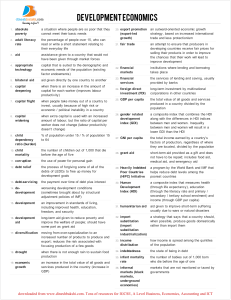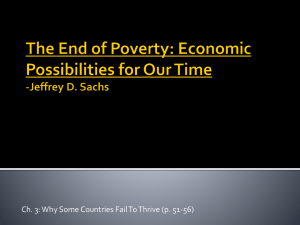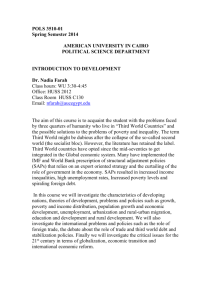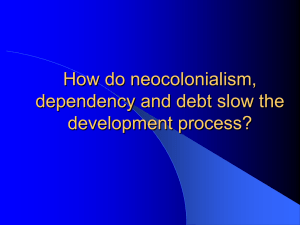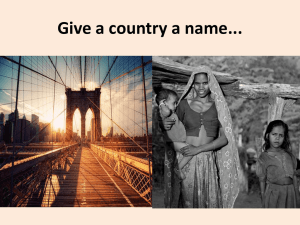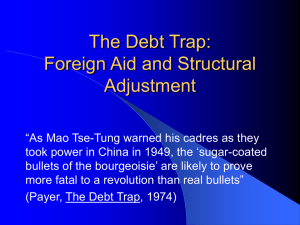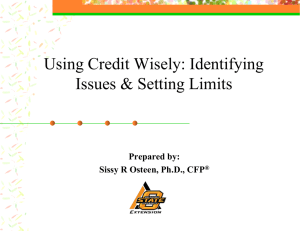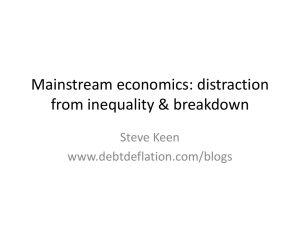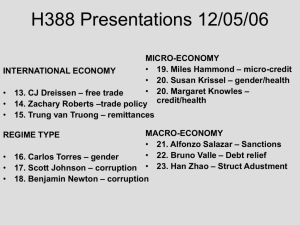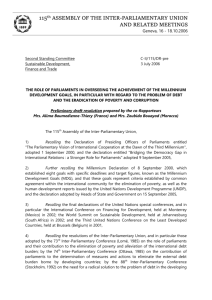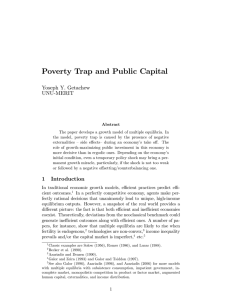The Development Gap
advertisement
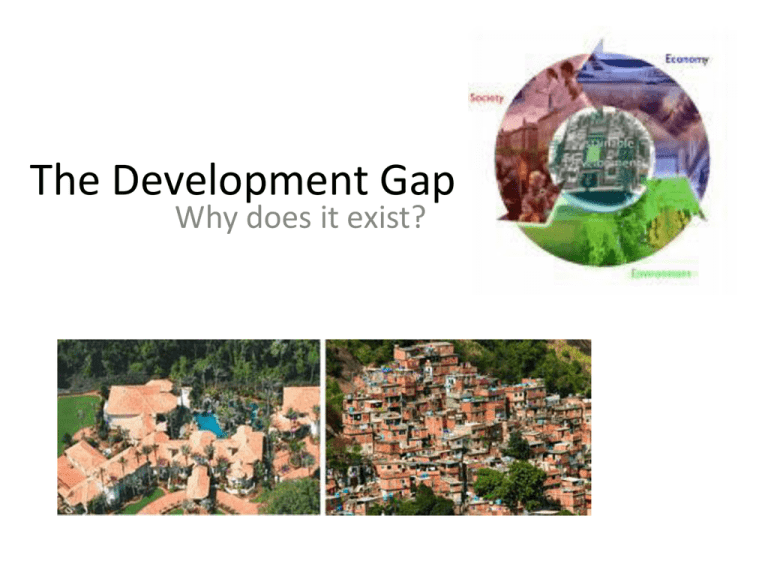
The Development Gap Why does it exist? Causes of the Development Gap Economic • Trade • Level of Savings • Fiscal Trap and Debt Causes of the Development Gap Other • Political – Corruption • Environmental - Physical Environment • Social - Demographic Trap Trade • Some countries benefit more from free trade than others. • Dependency Theory – Development of MEDCs promotes the underdevelopment of LEDCs and LLEDCs • This is because the value of most goods, products and services are added in MEDCs – means less wealth in developing countries • Seen with production of cocoa in Ghana and the Ivory Coast farmers only received 40-50% of the market value of unprocessed cocoa beans, a tiny amount compared to the final price sold for in MEDCs • MEDCs can also use their financial power to negatively influence trade in developing countries. For example, US cotton subsidies keep the global price 6-14% lower, without this, West African farmers would earn additional income enough to cover the healthcare costs of 6-10 people for a year Level of Savings • Can have significant impact on potential for sustained economic growth • Those in poverty cannot save as they need income to sustain life (subsistence) • World Bank figures show that those in the least developed countries only save 10 % of their income compared to 25 % in the most developed countries. Fiscal Trap (Debt) • Governments can lack finance to pay for improvements in services and infrastructure due to need to repay debt. • In Malawi 9.6 % of countries GDP goes towards repaying debt compared to 4.6 % on healthcare. • This discourages FDI which further prevents economic growth. Furthermore, SAPs emplaced by the IMF to counter debt can tend to negatively impact other areas – leading some to claim that they harm more than help Politics • Government can fail to invest in infrastructure or allows corruption to rise to levels that impair economic activity. • Zimbabwe political corruption left the economy in deep crisis with rapid inflation deindustrialisation and shortages of fuel and food. This has led life expectancy to fall from 60 in 1990 to 39 in 2008. Demographic Trap • High fertility and rapid population growth can put a strain on infrastructure and services. This often occurs in areas of high levels of poverty due to high infant mortality, lack of state welfare and low levels of education. • Bangladesh 3 Million added to the population each year which has put great strain on the resources and of the economy to meet the need of the rising number of people, 50 % below poverty line. Physical Environment • Can pose specific problems to people and act as catalysts to other factors which generate poverty. • Climate change offers serious threat to developing countries are less able to respond such as Bangladesh where climate change is predicted to have devastating impact on crops with yields falling by up to 30 %. Serious threat to people’s livelihoods and food security • Sudan – severe drought has put pressure on people’s ability to subsist and survive In conclusion… • Combination of factors, yet those relating to economics hold more importance. • This is because it is economics that impacts upon all aspects of development –it is needed to ensure good social development i.e. in healthcare and education • Also, the non-economic factors tend to see importance in their ability to impact upon economics i.e. issues in the physical environment or with demographics limit successful economic growth
